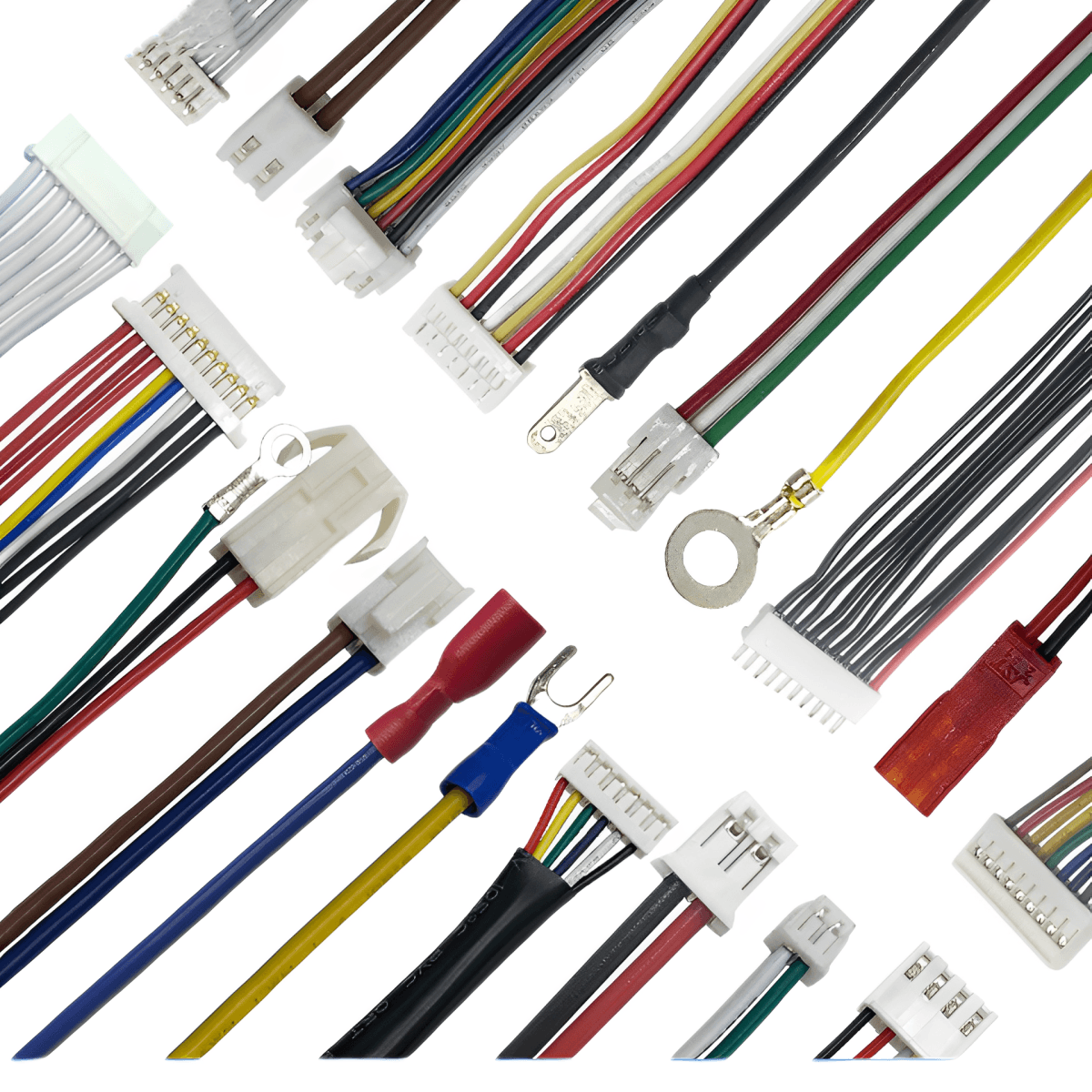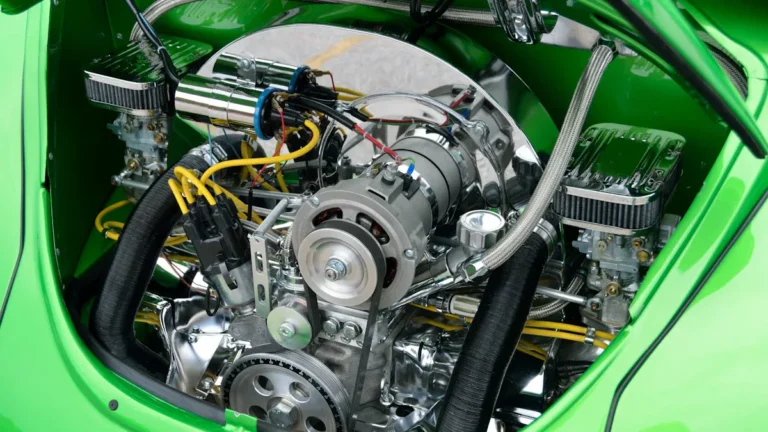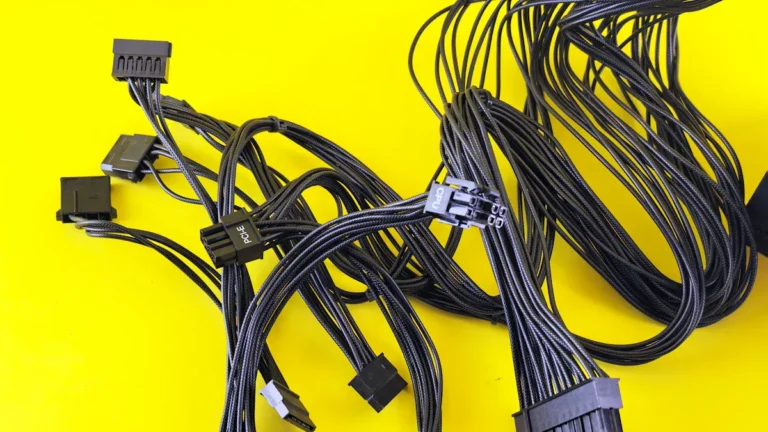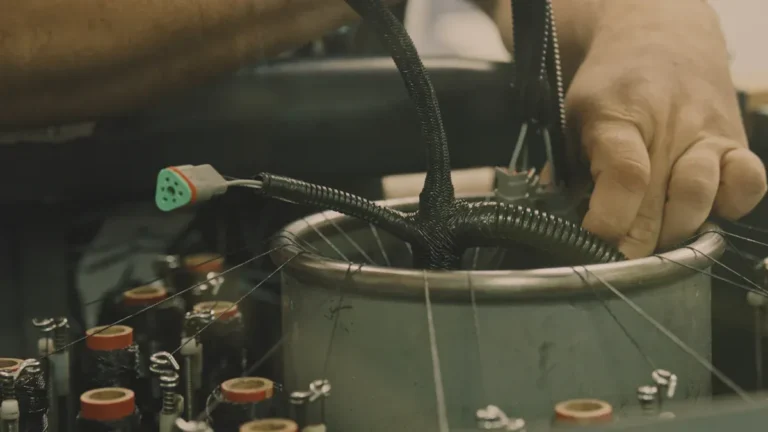The ultimate guide to wiring harness
Introduction
wiring harness are key components in electrical systems and are widely used in many fields such as automobiles, aerospace, electronic equipment, and industrial automation. They play a core role in connecting various electrical components and transmitting power and signals. Their design, manufacturing, and quality control are directly related to the performance, reliability, and safety of the entire system.

Basic structure and composition of wire harnesses
Wires and cables
The main body of the wire harness is composed of wires and cables of different specifications. The appropriate wire diameter and insulation material are selected according to the current carrying requirements and signal transmission characteristics of the application scenario. For example, in the high temperature environment of the automobile engine compartment, high-temperature resistant cross-linked polyethylene (XLPE) insulated wires are often used to ensure stable electrical performance and avoid the risk of short circuit caused by insulation aging; for signal transmission wire harnesses inside precision electronic equipment, thin coaxial cables with shielding layers are selected to reduce electromagnetic interference.
The conductor material of the wire is mostly copper or aluminum. Copper has good conductivity and ductility and is the mainstream choice, but in some weight-sensitive and low-current occasions, aluminum wires are also used, and their cost is relatively low.
Connectors
The connector is a key component for the wire harness to achieve fast and reliable connection with electrical components. According to the connection method, it can be divided into plug-in type, welding type, crimping type, etc. Plug-in connectors facilitate the assembly and maintenance of equipment.
For example, the connection between computer motherboard and peripheral equipment adopts standardized plug-in interfaces such as USB and HDMI, which is convenient for users to plug and unplug by themselves; welding connectors are often used in occasions where the connection stability is extremely high and not easy to disassemble, such as the key wiring harness connection in aerospace equipment, and the low loss and high reliability of signal transmission are ensured through precision welding; crimping connectors use special tools to press the wire conductor into the connector terminal. The operation is relatively simple and widely used in automotive wiring harness production, which can meet the needs of large-scale industrial manufacturing.
The number of pins, spacing, waterproof and dustproof levels of connectors are determined according to specific applications. In outdoor electronic equipment, waterproof connectors (such as IP67 and above) can effectively prevent rain and dust from intruding, ensuring the long-term stable operation of the system; for high-density circuit board connections, connectors with small spacing (such as 0.5mm or even smaller) can save space and meet the trend of miniaturization design.
Sheath and insulation materials
The sheath is wrapped around the outside of the wire harness to provide mechanical protection and prevent the wire harness from being damaged by wear, cutting, chemical corrosion, etc. Common sheath materials include polyvinyl chloride (PVC), polyurethane (PU), thermoplastic elastomer (TPE), etc. PVC sheath has low cost and moderate flexibility, and is widely used in general industrial and civilian wire harnesses; PU sheath has excellent wear resistance and oil resistance, and is suitable for wire harness protection in harsh environments such as automobile chassis and engineering machinery; TPE sheath has good elasticity and environmental protection characteristics, and is used in some consumer electronic product wire harnesses with high environmental protection requirements.
In addition to the insulation layer of the wire itself, insulating materials will also add insulating tape, heat shrink tubing, etc. to the branches and intersections of the wire harness. Insulating tape is used for simple insulation wrapping, and there are ordinary electrical tapes and high-temperature resistant tapes; heat shrink tubing fits the wire tightly after shrinking under heat, providing more reliable insulation and protection effects, and is often used for solder joint protection of electronic equipment wire harnesses and insulation reinforcement of wire joints.

Wire harness design process
Requirement analysis
Work closely with system engineers to fully understand the functional requirements of the application scenario for the electrical system, including but not limited to power transmission power, signal frequency range, equipment operating temperature range, electromagnetic interference environment, etc. For example, the design of high-voltage wire harnesses for new energy vehicles needs to consider the voltage output of the battery pack up to hundreds of volts, the large current carrying capacity during fast charging (up to hundreds of amperes), and the complex electromagnetic environment in the car to ensure that the wire harness does not have problems such as overheating and signal distortion under extreme working conditions.
Investigate the non-electrical performance requirements such as the product’s service life, reliability requirements, and maintenance convenience. For aerospace products, their service life is as long as decades, requiring the wire harness to have extremely high reliability, withstand harsh conditions such as space radiation and drastic temperature changes, and facilitate astronauts to quickly repair in a limited space when a fault occurs.
Schematic design
Draw a detailed electrical schematic according to the requirements to determine the connection relationship and signal flow of each electrical component. In automotive electronic control systems, the engine control unit (ECU) is connected to various sensors (such as oxygen sensors, crankshaft position sensors), and actuators (such as injectors and throttle motors) through wiring harnesses. The schematic diagram should accurately plan the line direction to avoid signal interference, reasonably allocate power lines, and ensure stable power supply for each component.
Review and optimize the schematic diagram repeatedly, use circuit simulation software to verify circuit performance, and troubleshoot potential problems in advance. For example, when designing the wiring harness of communication equipment, adjust the line length, impedance matching and other parameters through simulation analysis of signal attenuation and reflection to ensure the quality of high-frequency signal transmission.
Wire harness layout design
Convert the schematic diagram into a 2D or 3D wire harness layout diagram, consider the internal space limitations of the equipment, heat dissipation requirements, maintainability and other factors, and reasonably plan the direction, branch position and fixing method of the wire harness. In the wiring of industrial control cabinets, avoid the wire harness being too close to the heating element, reserve enough maintenance channels, and use wire troughs, cable ties, etc. to neatly fix the wire harness to prevent displacement and wear of the wire harness due to vibration.
Work with mechanical engineers to ensure that the wire harness layout is perfectly matched with the mechanical structure of the equipment. For precision instruments, a few millimeters of spatial error may affect the performance of the equipment. It is necessary to accurately design the bending radius of the wire harness and avoid key mechanical components to achieve the harmonious unity of electrical and mechanical.
Material selection and specification determination
According to the design requirements, select appropriate wires, cables, connectors, sheaths and other materials, and determine their specific specifications. For example, according to the calculated current value, refer to the wire current carrying capacity table to select the wire diameter; consider the pH of the working environment and select corrosion-resistant sheath materials; according to the signal transmission rate requirements, select the appropriate shielded cable specifications.
Establish a bill of materials (BOM) to record the model, specification, quantity, supplier and other information of all materials in detail, provide an accurate basis for procurement and production, and facilitate subsequent quality traceability and cost accounting.
Manufacturing process of wire harness
Wire processing
Wire cutting: Use a high-precision wire cutting machine to cut the wire according to the designed length, and the error is controlled within a very small range (usually within ±1mm) to ensure that the length of each section of the wire harness is accurately matched to avoid assembly and performance affected by wires that are too long or too short.
Stripping: Use a stripping machine to remove a certain length of insulation layer at both ends of the wire to prepare for subsequent connection processes such as crimping and welding. The stripping length must be strictly controlled to ensure that the conductor is fully exposed for connection, but not too long to cause excessive exposure of the conductor, increasing the risk of short circuit. The general tolerance is controlled at ±0.5mm.
Twisted wire: For some wire harnesses that need to enhance flexibility or improve electromagnetic shielding effect, the twisting process is adopted. Combine multiple thin wires in a specific twisting method (such as twisted pairs, star twists), and adjust the twist length to meet different electrical performance requirements, such as reducing inductance and capacitance coupling, and reducing signal crosstalk.
Connector assembly
Crimping: Insert the stripped wire conductor into the connector terminal, and use a special crimping machine to apply appropriate pressure to make the terminal and the conductor tightly combined. The crimping process requires strict control of parameters such as crimping height and width. Through regular sampling and testing, ensure that the crimping quality meets industry standards (such as tensile test requirements, to ensure that the wire does not detach from the terminal under a certain tensile force), and ensure the reliability and stability of the connection.
Welding: In some occasions where high precision and high reliability are required, welding is used to connect wires and connectors. For example, in military electronic equipment, laser welding technology is used to achieve precision welding of tiny solder joints. The welds are flat and strong, effectively preventing problems such as cold soldering and leaking soldering, and ensuring the continuity of signal transmission.
Assembly and fixation: Install the crimped or welded connectors to the corresponding positions according to the wiring harness layout design, and use screws, buckles and other fixings to firmly fix them on the wiring harness to prevent loosening and displacement during use.
Wiring harness assembly
Wiring: Arrange the processed wires, connectors and other components in order according to the 2D or 3D layout diagram, straighten the line direction, and avoid wire crossing and entanglement. When assembling the wiring harness of the car dashboard, it is necessary to accurately follow the design plan, integrate the many branch wiring harnesses in an orderly manner, and ensure that the line connections of each instrument and switch are accurate.
Bundling and fixing: Use tools such as cable ties, wire troughs, and tapes to bundle the wiring harnesses into bundles and fix them in designated locations such as equipment frames and wire troughs. For the wiring harness of the automobile engine compartment, high-temperature resistant and high-strength cable ties are often used, and rubber fixings are used to resist engine vibration and high temperature environment to ensure that the wiring harness is firmly installed.
Sheath installation: The pre-customized sheath is put on the outside of the wiring harness to ensure that the sheath fits tightly without wrinkles or damage. At the outlet of the electronic equipment harness, the rubber sheath is installed to protect the harness from external pulling and wear, and to play a certain waterproof and dustproof role.
Quality inspection and verification of wiring harness
Electrical performance tes
Continuity test: Use a professional continuity tester to check the conductivity of each wire in the harness to ensure that there is no circuit breakage or short circuit fault in the line. In large-scale harness production, automated testing equipment can be used for rapid scanning and detection to improve detection efficiency, and timely mark and rework the unqualified harnesses.
Insulation resistance test: Apply a certain voltage (such as 500V or 1000V DC voltage, depending on industry standards) between the wire and the sheath, and between different wires, measure the insulation resistance value, and determine whether the insulation performance meets the standard. Generally, the insulation resistance value is required to be higher than a certain threshold value (such as 10MΩ) under the specified humidity and temperature conditions to prevent leakage, breakdown and other problems.
Withstand voltage test: Apply a withstand voltage several times higher than the normal working voltage to the wiring harness (such as applying 2kV or even higher AC voltage to the automotive high-voltage wiring harness) for a certain period of time (usually 1-5 minutes) to observe whether there is breakdown or flashover to ensure that the wiring harness can withstand instantaneous high-voltage shocks and ensure safe use.
Mechanical performance test
Tensile test: Apply axial tension to the connection between the wire and the connector, the wiring harness fixing point, etc., to simulate the pulling situation in actual use and test the firmness of the connection. For example, the automotive wiring harness requires that the wire does not detach from the connector and the fixing point does not loosen under a certain tension (such as 100N), ensuring that the wiring harness structure is stable during vehicle driving and component repair.
Vibration test: Install the wiring harness on the vibration test bench, set the test conditions according to the actual vibration spectrum, acceleration and other parameters of the product, simulate the vibration environment of automobile engine and aircraft flight, and after a certain period of vibration (such as several hours to dozens of hours), check whether the wiring harness has wear, breakage, loose connectors and other problems to ensure
long-term reliability.
Bending test: Bend the wiring harness repeatedly to a certain angle and number of times (such as bending 180°, 1000 times), observe whether the insulation layer and sheath of the wire are damaged, and evaluate the flexibility and durability of the wiring harness. It is suitable for the detection of frequently active wiring harnesses such as wearable electronic devices and robot joints.
Environmental adaptability test
High temperature test: Place the wiring harness in a high temperature box, set the temperature higher than the maximum temperature used by the product (such as the test temperature of the wiring harness in the engine compartment of the car can reach 125°C), keep it for a certain time (such as 4-48 hours), observe the changes in the electrical and mechanical properties of the wiring harness, and ensure that it works normally in a high temperature environment without problems such as insulation aging and material softening.
Low temperature test: simulate cold environment (such as – 40°C) in a low temperature box, and also conduct electrical and mechanical performance tests to verify the reliability of the wiring harness at low temperature, such as whether the wire becomes brittle and whether the connector contact is good. This test is particularly important for some equipment used in polar regions.
Humidity test: control the humidity environment (such as 90% – 95% relative humidity), combine different temperature conditions, and conduct long-term (such as one week) wet heat cycle tests to check the moisture, mildew and corrosion resistance of the wiring harness, and prevent short circuits and material degradation caused by moisture. It is suitable for wiring harness testing of outdoor electronic equipment, ship equipment, etc.
Salt spray test: For wiring harnesses used in salt spray environments such as coastal areas and marine engineering, place them in a salt spray test box and test them according to the specified salt spray concentration and spray time to evaluate the corrosion resistance of components such as sheaths and connectors to ensure long-term stability.
Maintenance and troubleshooting of wiring harnesses
Daily maintenance points
Regularly check the appearance of the wiring harness to check for signs of damage, wear and aging, especially when vehicles, mechanical equipment, etc. are regularly maintained, check the relevant wiring harnesses simultaneously. For example, the wiring harness of the chassis of a car is often subject to bumps on the road and impacts from stones, which can easily cause the sheath to be damaged. It is necessary to find and repair it in time to avoid water ingress and short circuit.
Check whether the connector is firmly connected and whether there is any looseness or oxidation. For electronic equipment, the connector can be plugged and unplugged regularly to remove oxides, ensure good contact, and prevent signal interruption or increased contact resistance from causing heating problems.
Inspect the fixed points of the wiring harness to ensure that the wiring harness is firmly installed and has not shifted due to vibration, equipment maintenance, etc. In the maintenance of industrial production line equipment, tighten the loose cable ties and wire trough fixing screws to ensure the normal operation of the wiring harness.
Troubleshooting method
When an electrical fault occurs, such as partial malfunction of the equipment, first use tools such as a continuity tester and a multimeter to check the conductivity of the relevant wiring harness to determine whether there is a circuit break. If a wire is found to be broken, check the possible breakpoints along the line and repair or replace the damaged section.
For short circuit faults, combine insulation resistance testing to find out the damaged insulation. It may be due to the scratching of the wire insulation layer or the falling off of the heat shrink tube. Repair the damaged insulation, isolate the short circuit point, and restore the normal function of the wiring harness.
If the device has a signal interference problem, check whether the shielding layer of the wiring harness is intact and whether the connector is grounded reliably. For communication equipment, repair the damaged shielding layer, optimize the grounding connection, and reduce the impact of electromagnetic interference on signal transmission.
Conclusion
As the “veins” of the electrical system, the wiring harness runs through the entire process of design, manufacturing, use and maintenance of various products. Through rigorous design, fine manufacturing, strict testing and scientific maintenance, ensure that the wiring harness plays its key role in different fields and provides solid support for the stable operation, performance improvement and safety of the equipment. With the continuous advancement of science and technology, the performance requirements for wiring harnesses will continue to increase, and it is necessary to continuously optimize technology and processes to meet future development needs.







One Comment